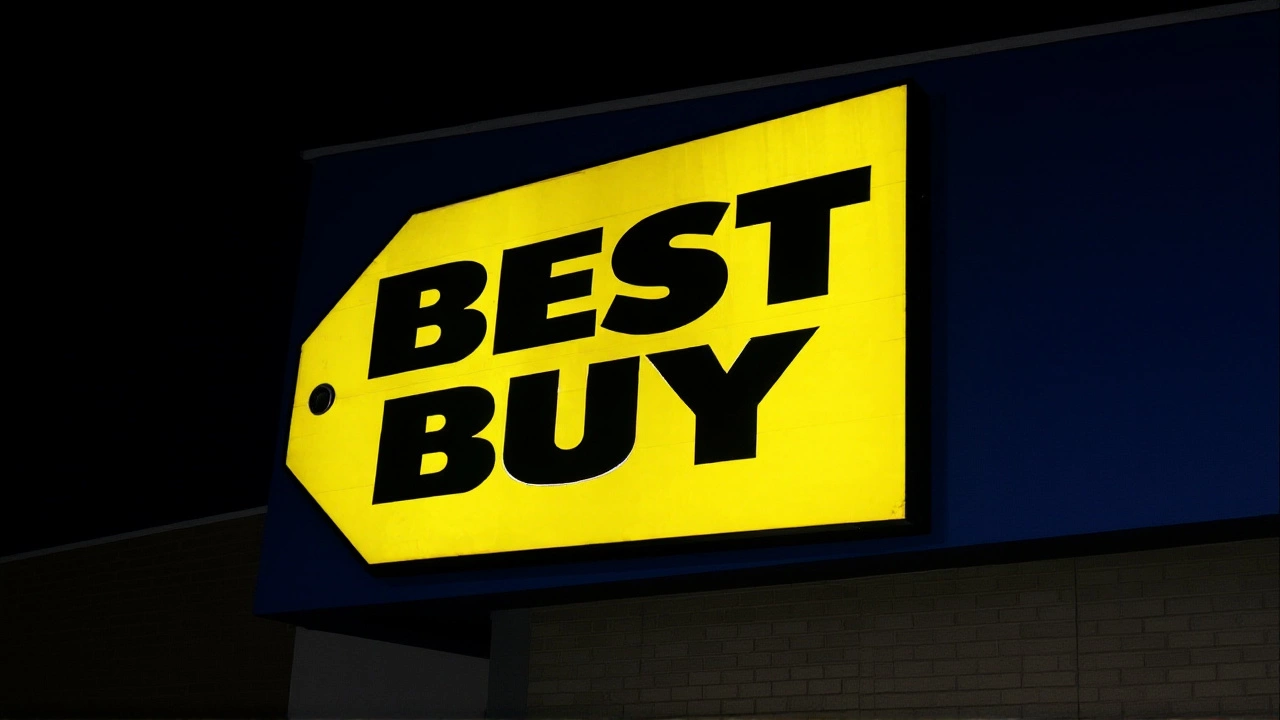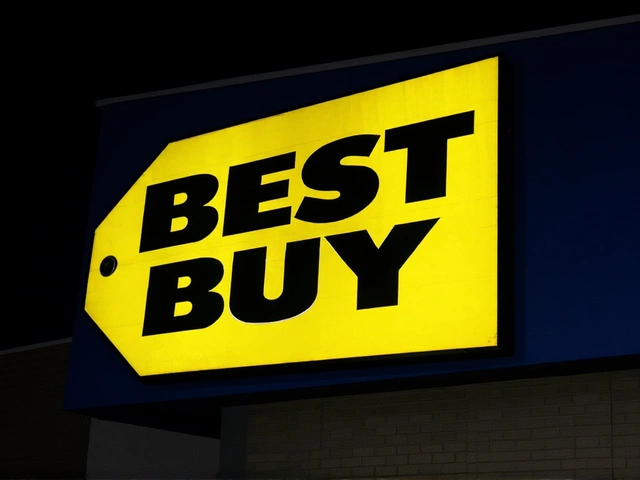Best Buy, Kohl's, Abercrombie & Tapestry Report Mixed Holiday Earnings Amid Margin Pressures

When Best Buy reported a 0.6% drop in Q3 2025 revenue to $10.31 billion on November 21, 2024, it wasn’t just another earnings miss — it was a signal that even the most resilient retailers are feeling the squeeze. The results, announced by Corie Barry, CEO of Best Buy headquartered in Richfield, Minnesota, came alongside grim numbers from Kohl’s, Abercrombie & Fitch, and Tapestry, painting a picture of a retail sector caught between inflation-weary shoppers and bloated inventories. The holiday season, once a surefire revenue engine, is now a minefield of discounting, shifting demand, and shrinking margins.
Who’s Winning, Who’s Losing?
Among the quartet, Abercrombie & Fitch stood out — barely. With net sales up 1% to $1.03 billion and comparable sales growing 2%, Fran Horowitz, CEO since 2018 and based in San Francisco, California, credited brand loyalty and digital momentum. Still, the gross margin slipped to 61% from 62.7%, a subtle but telling sign that even winners are paying a price. Meanwhile, Tapestry, parent of Coach and Kate Spade, saw a sharp 12% revenue drop to $1.84 billion in Q2 2025. Joanne Crevoiserat, who took the helm in January 2024, pointed squarely at China and Europe, where consumer confidence has cratered. But North America held firm — a lifeline in an otherwise turbulent quarter.
Kohl’s didn’t just stumble — it stumbled hard. Net sales fell 4.1% to $4.21 billion, with comparable sales down 5.3%. CEO Ashley Buchanan, based in Menomonee Falls, Wisconsin, admitted the quarter was defined by "a more promotional environment," especially in apparel. The gross margin plunged 230 basis points to 36.4%. And it’s not just the numbers — Kohl’s plans to shutter 15 stores by January 31, 2025, in California, Texas, and Florida, putting 1,200 jobs at risk. The closures include locations like 2100 South Sepulveda Boulevard in Los Angeles and 12000 North Freeway in Houston. It’s a stark reminder: retail isn’t just about sales anymore — it’s about survival.
The Margin Crunch Is Real
Here’s the thing: nobody’s making money like they used to. Best Buy saw online sales surge 14.2% to $2.03 billion — a bright spot. But domestic comparable sales fell 2.5%, and the company’s gains in computing and home theater were offset by slumping mobile and gaming sales. That’s not a trend — it’s a transformation. Consumers are trading up on essentials and cutting back on discretionary tech. Meanwhile, Tapestry and Kohl’s are drowning in inventory. Michael Lasser, an analyst at Deutsche Bank Securities, estimated Q4 margins will compress another 150–200 basis points due to "necessitated promotional activity." That’s not a forecast — it’s a warning.
And it’s not just these four. The National Retail Federation slashed its holiday sales growth projection to 2.1–2.9% for November 2024–January 2025, down from 3.1% last year. Neil Saunders, Managing Director of GlobalData Retail in London, predicts a 1.5–2.0 percentage point margin drop across the sector in Q4. "Recovery won’t come until Q2 2025," he said. That’s not optimism — it’s realism.
What’s Next? The Domino Effect
The fallout is already visible. Kohl’s is running a $500 million cost-cutting plan through 2026. Best Buy extended its $1.5 billion share buyback through 2027 — a vote of confidence, but also a sign they’re not investing heavily in growth right now. Abercrombie approved a $250 million buyback in mid-November. And then there’s the elephant in the room: Tapestry’s $4.5 billion acquisition of Capri Holdings, parent of Michael Kors and Jimmy Choo, expected to close by March 31, 2025. That’s a bet on consolidation — and a gamble that bigger means better in a shrinking market.
Behind the scenes, the Federal Trade Commission is still investigating retail data practices, opened in March 2024. If regulators tighten rules around digital targeting, that could cripple the very marketing tools retailers rely on to clear excess stock. Meanwhile, the Federal Reserve Bank of Atlanta’s GDPNow model forecasts Q4 2024 growth at just 1.8%, down from 2.9% in Q3. Consumers aren’t just being cautious — they’re pulling back.
Why This Matters Beyond the Stock Ticker
This isn’t just about quarterly numbers. It’s about what happens when the American consumer — the engine of the economy — starts pulling back on discretionary spending. When Kohl’s closes stores in Fort Lauderdale and Houston, it’s not just jobs lost. It’s community hubs shuttered, local tax bases eroded, and supply chains disrupted. When Best Buy pushes more sales online, it reshapes how we shop — and who gets left behind. And when Tapestry takes on $4.5 billion in debt to buy another luxury brand, it’s betting that luxury still has a future in a world where people are choosing vacations over handbags.
One thing is clear: the retail playbook of the past decade — growth at all costs — is dead. The new rulebook is about efficiency, resilience, and knowing when to walk away.
Frequently Asked Questions
How are rising inventory levels affecting holiday margins for retailers like Kohl’s and Tapestry?
Retailers like Kohl’s and Tapestry are stuck with excess inventory from pre-holiday overordering, forcing them to slash prices. Analysts estimate this will compress Q4 gross margins by 150–200 basis points. Deutsche Bank notes this is especially acute in department stores, where markdowns are now structural, not temporary.
Why did Abercrombie & Fitch outperform despite margin pressure?
Abercrombie & Fitch benefited from stronger brand loyalty among younger shoppers and a focused digital strategy that boosted online sales by 3%. Unlike competitors, it avoided deep discounting in core categories, preserving margin integrity even as gross profit dipped slightly. Its North American performance offset global weakness, a rare bright spot in the sector.
What’s the impact of Kohl’s store closures on local economies?
The planned closure of 15 stores in California, Texas, and Florida will eliminate roughly 1,200 jobs by January 31, 2025. These locations often serve as anchor tenants in shopping centers; their loss can trigger reduced foot traffic for nearby businesses, impacting small retailers and restaurants — a ripple effect that local governments aren’t prepared for.
When can retailers expect margin recovery?
According to Neil Saunders of GlobalData Retail, margin recovery is unlikely before Q2 2025. That’s because inventory normalization, consumer caution, and elevated labor costs will persist. Even if sales stabilize, the pressure to discount remains — meaning profitability won’t bounce back quickly, even with holiday sales.
How does the Tapestry-Capri acquisition change the luxury retail landscape?
Tapestry’s $4.5 billion buyout of Capri Holdings — which owns Michael Kors and Jimmy Choo — creates a $10 billion-plus luxury conglomerate. It’s a bet that scale can offset global weakness, especially in Europe and China. But it also increases debt risk and requires seamless integration — a challenge after Tapestry’s recent 12% sales drop. Success could redefine luxury retail; failure could trigger a credit downgrade.
What role is the Federal Trade Commission playing in this retail shift?
The Federal Trade Commission’s investigation into retail data practices, opened in March 2024, could restrict how companies target ads and track shopper behavior. If rules tighten by Q3 2025, retailers may lose precision in their promotional campaigns — making it harder to clear inventory without across-the-board discounts, further squeezing margins.
